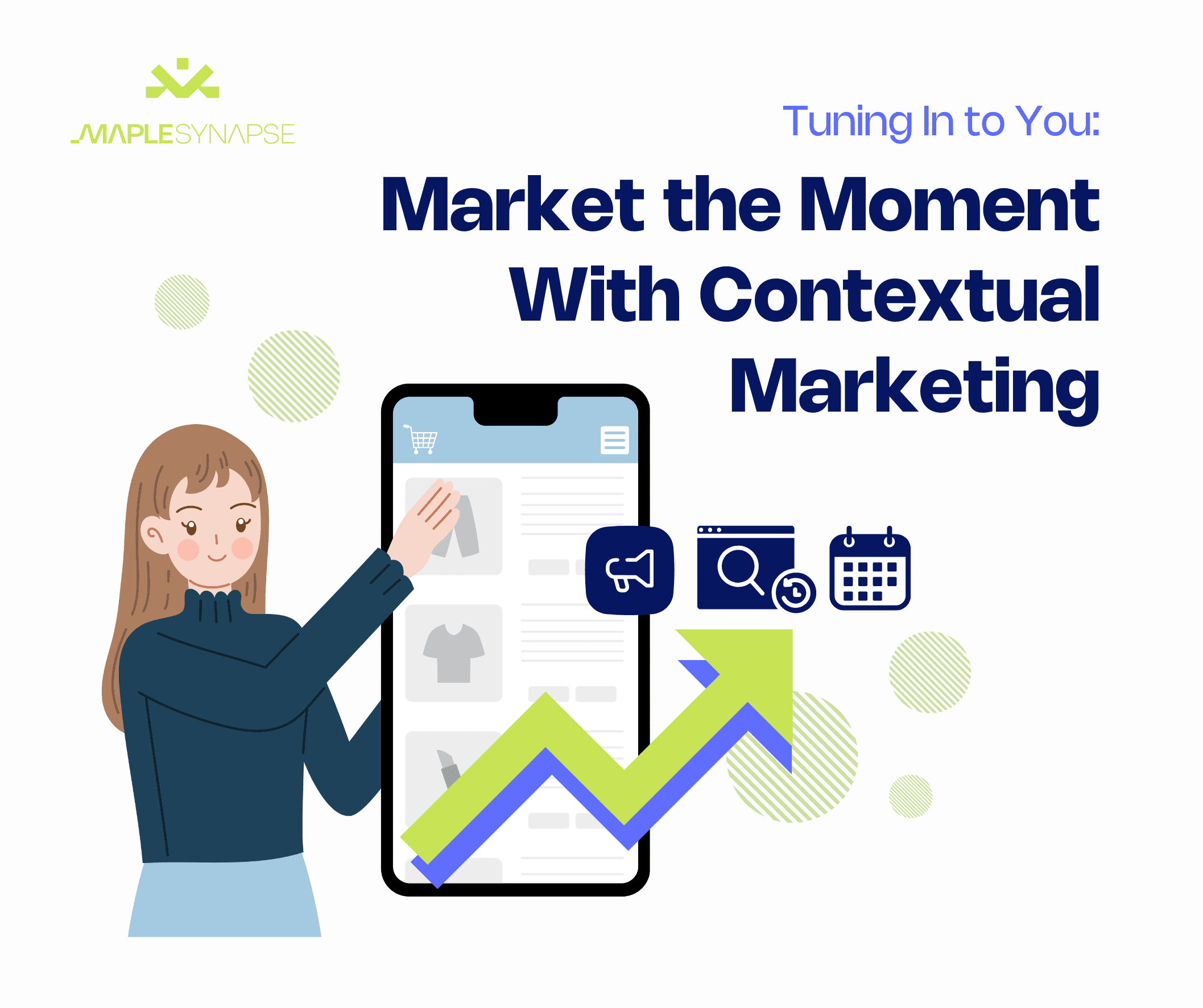Have you ever noticed that after searching for something just once, and seeing an ad for it all over the place? These ads pop up so often that we click on them and eventually buy the product being advertised.
This is the "Contextual Marketing” strategy. It uses the context surrounding each customer, such as their current interests and search behaviour, to deliver products and services that align with what they care about most.
So, why is contextual marketing so effective when it comes to personalized content? Well, content that actually gets noticed isn’t just well-designed—it’s smart, relevant, and data-driven. Contextual marketing pushes personalization to a new level, by using real-time data to produce content that speaks directly to what a customer needs when they need it.
What is Contextual Marketing?
Contextual marketing means delivering content that fits the unique context a customer is in at any given moment. Instead of relying on just demographics, contextual marketing taps into factors like location, time of day, weather, device type, and browsing behaviour. Using these insights, brands can show relevant offers, recommendations, and ads that fit perfectly with customers’ immediate interests and context.
How Does Data Drive Contextual Marketing?
Data is at the core of contextual marketing. It provides the insight necessary to make content more intimate and engaging by:
Real-Time Location Data
GPS and location information enable marketers to distribute offers that are relevant to a user’s precise location. Let’s say a cafe pushes out an ad for a hot latte when someone is passing by on a snowy day. Such location-triggered micro-moments make content instantly digestible.
Browsing Behavior and Search Queries
Contextual marketing tools analyze search patterns and website activity to determine a user’s current interests. For example, if a user is browsing fall fashion trends, a clothing brand can display ads with cozy sweaters or fall boots.
Device and Platform Adaptation
Data can reveal whether a user is on a desktop, tablet, or smartphone, allowing brands to optimize content format. A mobile user might see a shorter, easy-to-read copy, while desktop users might get a more detailed version.
How Does Contextual Marketing Beat Traditional Targeting?
Old-school marketing is usually based on past user behavior, like purchase history or demographic data. That’s all good, but it’s not as immediate as contextual marketing that puts you in the “right now” moment. For example, your past purchases might suggest you’re an outdoor person, but contextual information like your current location or recent search history can indicate that you’re planning a camping trip next weekend. With this insight, a brand can display content about camping gear sales or trip-planning guides, leading to higher engagement and conversions.
Real Scenarios of Contextual Marketing
Streaming service recommendations based on mood
A streaming platform can recommend movies or shows based on the time of day and the user’s recent viewing habits. For example, in the evening after work, the platform might suggest relaxing sitcoms or trending shows, while on weekends, it might promote a popular new release.
Weather-based skincare recommendations
Users might see ads for moisturizing lotions or hydrating face masks during the winter. Likewise, they might receive promotions for sunscreen and lightweight moisturizers during the summer.
Ride-share promotions during large events
A ride-share company can utilize contextual marketing to push promotions during large city events, like concerts or sports games, targeting users within the vicinity. When people leave these events, they might receive a discount code for a ride home that convinces them to choose the ride-share service over alternatives.
Vacation-ready deals for last-minute travellers
A travel agency can track search patterns and identify users looking up flight prices or popular travel destinations. Using contextual marketing, they send tailored ads featuring limited-time travel deals, encouraging users to book their vacation on the spot. This strategy connects with travellers when they’re already in a trip-planning mindset, thus making conversions more likely and ensuring a seamless click-through process.
Tools That Power Contextual Marketing
Tools like AI and machine learning can collect, analyze, and interpret user data in real-time, enabling brands to predict customer intent and adapt to changing contexts. AI can anticipate what a user is likely to do next based on their online behaviour, while machine learning continuously updates data, ensuring that content stays relevant as the user’s context evolves.
Benefits of Contextual Marketing for Brands
Enhanced Relevance
Data-driven content means you’re always delivering value. By aligning content with users’ real-time needs, you boost the chances of positive engagement.
Improved Customer Loyalty
Content that is personal and contextual builds trust and ensures customer engagement and loyalty.
Higher ROI
When content resonates on a personal level, conversion rates climb. For brands, this translates to better ROI on marketing spend.
How to Get Started with Contextual Marketing
Start with small, data-rich actions. These include using location-based promotions, adapting content for device types, or showing product suggestions based on recent searches. With contextual marketing, brands can move beyond generic advertising to deliver experiences that feel personal and timely.
If you need help, our Maple data & marketing experts can help you craft contextual marketing strategies tailored to your goals and audience, ensuring that every interaction is as relevant and engaging as possible. Get in touch with us to learn more.
. . .
Maple Synapse is a digital solutions expert offering website design, custom applications, digital marketing, and cloud services. We partner with businesses across Canada and globally to drive growth and success online through innovative and tailored solutions.
Stay connected!
Follow us on social media for the latest updates, tips, and digital insights. Facebook | Instagram | LinkedIn | X
